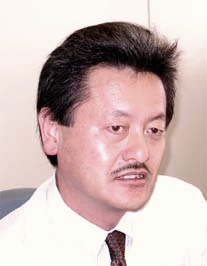
Events

Events
Title:Technological Vicissitudes: From Reprocessing toward the Solution of Radioactive Wastes by P&T, U Approach
Time:9:30 to 11:00, Jul.23, 2019
Place:F207, School of Mechanical Engineering
Host:WU Yan, AssociateProfessor (Department of Nuclear Science and Engineering)
Biography
Professor Emeritus Masaki Ozawa, Doctor of Engineering (Nuclear Engineering, given by the University of Tokyo, 1993),  has began his professional career at the Tokai Reprocessing Plant, Power Reactor and Nuclear Fuel Development Cooperation (PNC) in 1975, and held the position as a Senior Scientist at JAEA (Japan Atomic Energy Agency). In the Tokyo Institute of Technology (Tokyo Tech), during 2014 to 2016, he accepted a position of the chair of the Deapartment of Nuclear Engineering, Graduate School of Science and Engineering. He has been a Professor Emeritus of Tokyo Tech since 2016, and was a Guest Professor of Shanghai Jiao Tong University, China (2015 to 2018).
has began his professional career at the Tokai Reprocessing Plant, Power Reactor and Nuclear Fuel Development Cooperation (PNC) in 1975, and held the position as a Senior Scientist at JAEA (Japan Atomic Energy Agency). In the Tokyo Institute of Technology (Tokyo Tech), during 2014 to 2016, he accepted a position of the chair of the Deapartment of Nuclear Engineering, Graduate School of Science and Engineering. He has been a Professor Emeritus of Tokyo Tech since 2016, and was a Guest Professor of Shanghai Jiao Tong University, China (2015 to 2018).
Prof. Emeritus Ozawa is an expert of separation chemistry of plutonium, minor actinides and long-lived fission products, with holding of 19 patents (international) and 5 co-edited books/volumes, publishing 151 papers in reputed scientific journals and international conferences in the fields of spent fuel reprocessing and partitioning & transmutation of radioactive wastes. In this context, in 2018 he received a [21st Century Invention Award] from Japan Institute of Invention and Innovation. He is presently an editorial board member of 4 scientific journals including J. of Radioanal. Nucl. Chemistry.
Abstract
Basic process chemistry of hydrometallurgical separation processes, as PUREX for TRU recovery and TRUEX for TPU recovery, were shortly reviewed. Separation of > 99.9% of minor actinides (MA) was successfully achieved by laboratory-scale, counter-current experiments until the end of the 20th century. Salt-free technologies based on combinatorial in situ electooxidation with CHON-type chemical reagents were developed for those processes towards sodium- and α- free radioactive wastes towards the next generation reprocessing plant. Yet global standard extractants for MA and MA/Ln separation are not identified world-widely.
Fission reaction will create 31 rare elements including 4 rarest metals (3 PGMs and Tc) and 11 REEs. Hence, the spent nuclear fuel and/or HLLW must no longer be rad. wastes but must be potential veins of rare metal. Such non or less radioactive (<10-2 Bq/g) fission products (FPs) as Mo, Pd, In, La, Nd, Dy, etc., would preferentially be recovered as new resources for utilization Electrodeposition of the rarest metals (including Re) in HLLW are significantly enhanced by under potential deposition (UPD) by Pdadatom or Rhadatom, and such deposit electrodes showed unique and higher catalytic ability than that of Pt-black electrode on electrolytic H2 production.


Shanghai Jiao Tong University
Address: 800 Dongchuan Road, Shanghai
200240